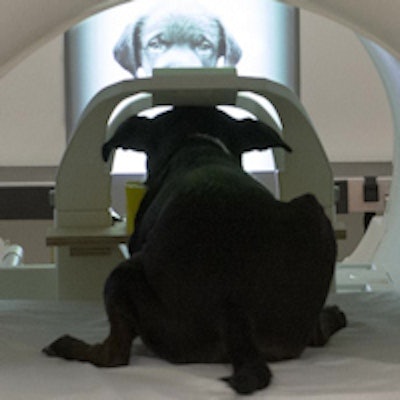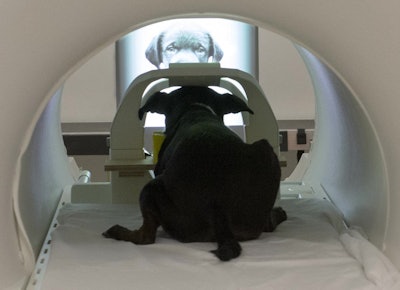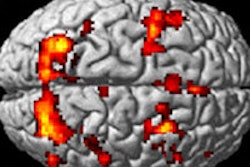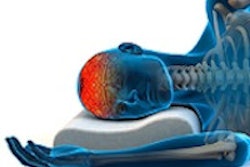
Have you ever wondered what your Fido is thinking when he sees another dog? Researchers from Emory University wanted to answer that question, so they used functional MRI (fMRI) to scan the brains of dogs while the animals looked at pictures of other canines as well as humans.
They found that dogs appear to have a specialized region in the temporal cortex of the brain for processing faces. The study provides the first evidence that dogs may have this type of region dedicated to processing facial information -- and the ability could be hardwired through evolution, explaining their sensitivity to human social cues, according to senior author Dr. Gregory Berns, PhD, and colleagues.
 Dogs were trained to view images while undergoing fMRI scans. Photo by Dr. Gregory Berns, PhD.
Dogs were trained to view images while undergoing fMRI scans. Photo by Dr. Gregory Berns, PhD.Emory's Dog Project is researching evolutionary questions around canines. As part of the project, the researchers trained dogs to enter an MRI scanner and remain motionless during scanning without restraint or sedation (dogs don't normally respond to 2D images -- indeed, only six of the eight dogs enrolled in the study were able to maintain their gaze on the screen).
Previous research identified the caudate region of the canine brain as a reward center, the researchers noted. It has also demonstrated how that region of a dog's brain responds more strongly to scents of familiar humans than to those of other humans.
The current study focused on how dogs responded to everyday objects as opposed to faces, with the animals viewing both static and video faces. The researchers found that a region of the temporal lobe in the dogs responded more to movies of human faces than to movies of everyday objects.
The same region responded similarly to still images of human faces and dog faces, and it responded significantly more to both human and dog faces than to images of everyday objects. If the dogs' response to faces was learned -- such as by associating a human face with food -- one would expect to see a response in the reward system of the brain, but that was not the case, according to the researchers.
Berns and colleagues called the canine face-processing region they discovered the "dog face area," or DFA. They noted that humans have at least three of these face-processing regions in the brain, including the fusiform face area, or FFA. The FFA is associated with distinguishing faces from other objects.
The researchers postulated that recognizing faces is important for any social creature; understanding canine facial recognition may help advance the understanding of social cognition and perception in general.



















